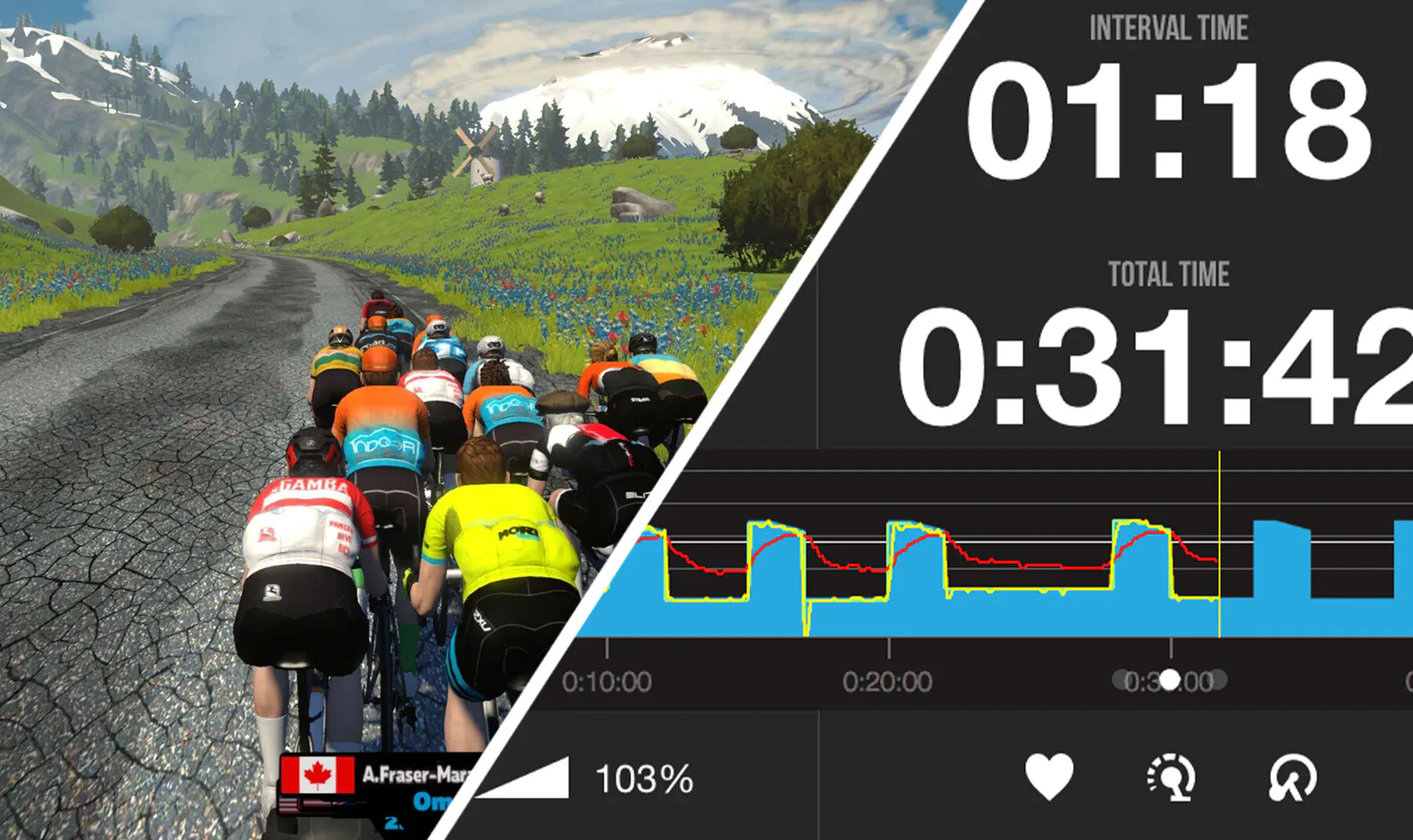Caring for your mountain bike might seem intimidating or tedious. After all, between the suspension, drivetrain, and brakes, there is a lot going on there! But the basic work can actually be fun and rewarding. With just a few tools and a consistent routine, keeping your mountain bike in good working order is pretty simple. Here’s how it's done.
[button]Shop all mountain bikes[/button]
How to wash a bike
There’s no way around it, if you ride your mountain bike, you’re going to have to wash it. But it doesn’t have to take all afternoon. Here’s what to do when things get gritty.
Bike wash essentials
Soap - $8.45 (you don't need anything fancy!)
Degreaser - $16.95
Bucket - $10
Sponge - $6.99
Gear brush - $6.48
Cleaning and lubricating a bike chain
 If you only clean one thing, make it the drivetrain. Start here before you wash the rest of your bike. That way, the grime from your drivetrain gets washed away when you clean the rest of the bike.
If you only clean one thing, make it the drivetrain. Start here before you wash the rest of your bike. That way, the grime from your drivetrain gets washed away when you clean the rest of the bike.
Spray on some degreaser (like Bike Hardcore or MucOff), and scrub your chain, cassette, and chainrings. Pedal your bike as you hold a rag around the chain to remove extra grease and grit. Be sure to shield your brake rotor from the grease and cleaning spray.
On your cassette, you’ll likely need to use a stiff brush to help out the degreaser. After scrubbing, rinse everything off with soapy water. If you have 2x or 3x chainrings, it helps to have your chain in the biggest ring as you wipe everything down, paying special attention to all of the components. If they need extra scrubbing, bust out the bristle brush again.
Instead of spraying from a high-pressure hose, use a more gentle spray, or even a spray bottle or water bottle to wash away the cleaner and the grime. Dry the chain with a clean rag or towel.
Steps for washing a bike
After you clean your chain and drivetrain, you’ll want to focus on the rest of the bike.
Fill a bucket with hot, soapy water. Start at the top of the bike and work your way down. Give the whole bike a scrub with your sponge or soft bristle brush. If the frame is especially filthy, take your wheels off and wipe down the fork and rear triangle. Be thorough and scrub the rims, hubs, spokes and tires too.
Lightly spray the bike down with a hose to gently rinse away any remaining soap. If you don't have a hose, a general-purpose spray bottle is a great alternative. Avoid spraying bearings directly (i.e., hubs, bottom bracket, and headset) with a high pressure hose. It’s also a good idea to dry everything thoroughly — you don’t want to leave a bike wet. When your bike is completely dry, lubricate your chain (read all about it after the break).
[newsletter]
How to lube your chain
 Be sure to start with a clean, dry chain — no problem, right? After all, you just degreased your drivetrain and washed your bike. Depending where you ride (sandy desert, muddy singletrack) and the season, you’ll want a lube that best suits your conditions. Always apply it directly to the rollers of the chain. It's usually convenient to do this near the rear derailleur. Be careful to avoid getting anything on your disc brake, and don’t overdo it in your application. Use a clean dry rag to wipe all excess lube away from the chain, pulley wheels, chainring teeth, etc. Only the chain rollers need lubrication. Any excess lube left on the surface will only attract more dirt and grime.
Be sure to start with a clean, dry chain — no problem, right? After all, you just degreased your drivetrain and washed your bike. Depending where you ride (sandy desert, muddy singletrack) and the season, you’ll want a lube that best suits your conditions. Always apply it directly to the rollers of the chain. It's usually convenient to do this near the rear derailleur. Be careful to avoid getting anything on your disc brake, and don’t overdo it in your application. Use a clean dry rag to wipe all excess lube away from the chain, pulley wheels, chainring teeth, etc. Only the chain rollers need lubrication. Any excess lube left on the surface will only attract more dirt and grime.
How to check your tires
Here's the simplest maintenance item for every mountain biker. Check your tire pressure! Even if you ride daily, it’s smart to check your tires before each ride — you never know what could have happened at the end of your last ride (like picking up a thorn), which could have caused your tires to lose air. Give both tires a visual inspection for tread wear. Also, keep track of when you last topped off your tire sealant if you’re running tubeless. It should be refreshed every three months or, at the very least, at the beginning of each new season.
[product-block handle="silca-pista-plus-floor-pump"/]
Clean your suspension
Wipe down your suspension stanchions and seals with a soft, clean cloth. Keeping dust and dirt off of your fork and shocks will help preserve them. You also want to regularly check your air pressure for both the shock and the fork every few months. Maybe write down your settings somewhere handy like an iPhone notes app, so it's easy to reference.
Tuning mountain bike suspension
A shock pump is an essential tool for most suspension components. It's like a tire pump but meant only for Schrader valves and very high pressures. With a bit of online research, you can pretty easily find recommended settings for your suspension — in fact, many forks have a little table printed on one of the legs with suggested settings based on rider weight. Be sure to account for your pack, kit, shoes, and helmet weight when using these recommendations. (For more details, check out our support pages for how to set up sag and rebound.)
If you want to make adjustments, only adjust a single variable each time, such as rebound or shock PSI. Be methodical and go step-by-step. Ride on a familiar trail and ask yourself if the change made your bike feel better, worse, or the same. Let that guide the next adjustment you try.
[product-block handle="fox-high-pressure-shock-pump-350-psi"/]
Five common mistakes to avoid
- Using too much lube. If your chain is constantly black, dirty, and greasy, you’re overdoing it. If you use too much lube, or not wiping away the excess after application, you’ll attract more grime, which will in turn break down your chain faster.
- Choosing one lube for all conditions. You really do need a wet lube and a dry lube for wet and dry conditions. Don’t just always stick with the same for everything.
- Contaminating your disc rotors. If you are cleaning or lubing and want to make sure that your rotor doesn’t get hit, cover it with a clean towel to keep it clean and away from chemicals. Contamination is a common cause of loud, squealing brakes.
- Forgetting to grease other moving parts. If you have trouble putting your front or rear wheel axles back into your bike after taking them out, it’s because they’re dry. Sparingly apply some grease.
- Over-tightening bolts. You don't want things coming loose, but literally every fastener on your bike has a torque specification. You might want to invest in a torque wrench if you plan on doing a lot of home maintenance.
Always check your brakes
Give your brake pads a visual inspection to make sure they’re not wearing thin — there should be at least 3mm of brake material. It’s a good idea to order a new pair ahead of time so you're prepared. Spin your wheel to make sure there’s no rubbing and that the rotor is straight. To fix brake rub, try loosening your caliper bolts, applying the brake to center the caliper, and retightening the bolts while the brake is still engaged (see: How to fix disc brake rub). If you’ve noticed that your brakes are squealing, your rotor or pads might be contaminated with oil. Start by cleaning your brake rotor with rubbing alcohol and a perfectly clean rag or paper towel. If that doesn't fix the noise, you might need new brake pads
[product-block handle="sram-disc-brake-pads-organic-compound-guide-trail"/]
Bleeding hydraulic brakes
You’ll probably only need to do this once or twice per year, depending on your brakes and your riding style. If the lever feel is inconsistent, it might be time to purge the brake line of air bubbles. Intermediate-level home mechanics can competently bleed brakes, but takes experience and special tools, so if you're not ready, it’s best to leave it to your local bike shop.
Check your shifting cables
Similar to the feeling when you need to bleed your brakes, when you notice that your shifting has quite a bit of friction, or if the shifting seems inconsistent or sluggish, it’s probably time to replace your cables. While not as tricky as a brake bleed, many prefer to have a bike shop take care of this maintenance item, especially for internally routed cables. New cables will also require the shifting to be re-tuned as well.

How much does a bike tune up cost?
Okay, so some of this maintenance might be out of your league if you're new to mountain bikes. That's cool. Depending on your riding, your local bike shop, and what you want done, an average mountain bike tune up will cost between $60 and $150. Even if you keep your bike in good working order and clean it often, an annual pro tune-up can still make a big difference. The shop can look for things you might not see, and they can give you a good idea of when you’ll need to replace certain parts.
Conclusion
Above all, just keep your mountain bike clean, your chain lubed, and your tires pumped up. Those basic maintenance tasks set you up for success. Even if you're not equipped for more advanced maintenance, having a clean bike will make it easier for you to spot wear or damage that might crop up over the course of a season of riding.

























